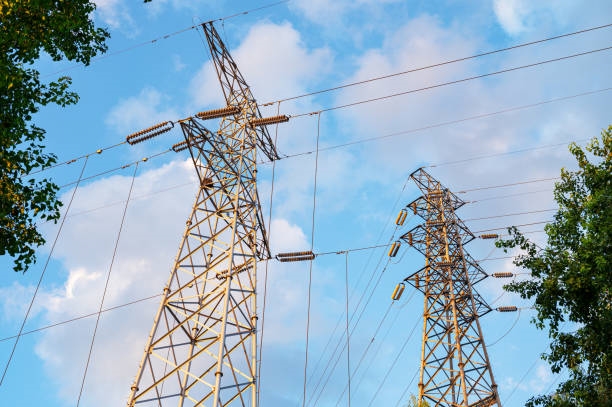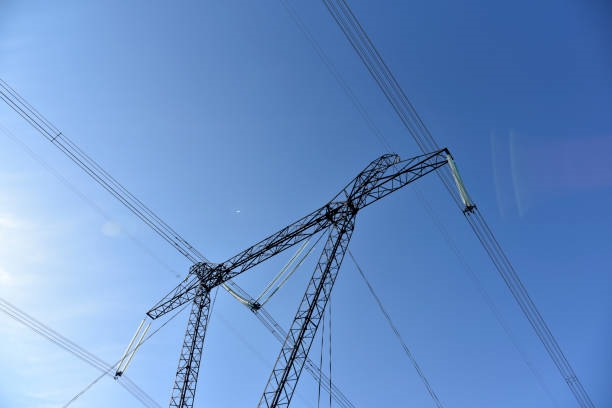What is voltage drop
Voltage drop refers to the reduction of voltage along a circuit as current flows, caused by the presence of components such as resistance, inductance, and capacitance. When current passes through resistive elements, power is dissipated and the voltage decreases. Similarly, current through inductors and capacitors can lead to voltage reduction.
Voltage drop is an important phenomenon in power systems. It can reduce voltages to levels where equipment cannot operate properly. Excessive voltage drop affects performance and stability, and can potentially damage electronic devices.
In transmission and distribution systems, voltage drop must be considered. Because voltage drop varies with current magnitude, resistance, inductance, capacitance, and line length, system design requires appropriate selection of cables, conductors, and equipment to keep voltage drop within acceptable limits.
Voltage drop can be evaluated and controlled using calculation and measurement methods used in power engineering, ensuring voltages remain at acceptable levels to maintain system performance and stability.
Factors affecting voltage drop
The magnitude of voltage drop is influenced by these main factors:
- Circuit resistance: Current through resistive elements causes voltage drop. The resistance depends on the material and dimensions of conductors, cables, or devices used in the circuit.
- Circuit length: The longer the distance current travels, the larger the voltage drop. Voltage drop is proportional to circuit length.
- Current magnitude: Larger currents produce greater voltage drop. Voltage drop is proportional to current.
- Inductance and capacitance: Current through inductors or capacitors also produces voltage drop. The voltage drop caused by inductance is due to its opposition to changes in current, and capacitance likewise affects voltage when current changes.
- Power supply stability: If the supply voltage is unstable, with fluctuations or drift, it affects the circuit voltage. Such voltage variations can be viewed as a form of voltage drop.
- Temperature effects: The resistance of wires, cables, or other resistive elements can change with temperature. Temperature variations therefore affect voltage drop.
These factors should be considered when designing and operating circuits to keep voltages within the desired range and to protect equipment.
How to calculate voltage drop in transmission systems
Voltage drop in a transmission system refers to the voltage loss that occurs along transmission lines due to resistance, inductance, capacitance, and other elements. Voltage drop can be calculated using the following formula:
Voltage drop (V) = Current (I) * Total resistance (R)
Here, current (in amperes) is the current flowing through the transmission line. Total resistance (in ohms) includes the resistance of the line and the combined resistance of cables, conductors, and other series resistances. Note that voltage drop is proportional to current and inversely proportional to resistance.
When calculating, consider line length, conductor material and size, current load, and conductor bundling or distribution density. Also account for temperature-dependent changes in line resistance and apply appropriate temperature corrections.
Difference between voltage drop and voltage loss
Voltage drop and voltage loss describe related but distinct concepts.
- Voltage drop: The reduction in voltage measured along a circuit when current flows, caused by elements such as resistance, inductance, and capacitance. Voltage drop commonly refers to the observed decrease in voltage along transmission or distribution lines or within circuits.
- Voltage loss: The conversion of electrical energy into heat or other forms due to resistance, inductance, and capacitance, resulting in loss of voltage. Voltage loss typically refers to energy loss through resistive elements such as cables, wires, or resistors in a circuit.
Although both terms involve a reduction in voltage when current flows, their focus differs. Voltage drop emphasizes the change in voltage along a circuit, especially over long transmission or distribution distances. Voltage loss emphasizes the conversion of electrical energy into other forms and is more relevant for calculating power dissipation and efficiency.
In power systems and circuit design, both voltage drop and voltage loss are typically considered to ensure voltage remains within acceptable ranges while minimizing energy loss and improving system efficiency.
 ALLPCB
ALLPCB








